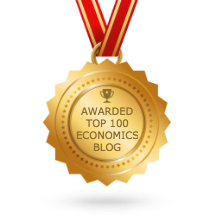Despite greater economic challenges, children in Latino immigrant families have a key advantage for personal flourishing: strong families and communities.
By Ann Dunning. She is co-author of the book Radical Señora Era: Ancestral Latin American Secrets for a Healthier Happier Life. Excerpts:
"The “Hispanic paradox,” first identified by the sociologist Kyriakos
Markides in 1986, found that despite greater economic challenges,
Latinos have some health advantages over non-Hispanics."
"among
immigrants who came from Mexico to the U.S. as teenagers, just 2.3%
reported suicidal ideation, compared with 8.9% of their American-born
peers."
"“immigrant youth have a lower risk of alcohol, tobacco and
marijuana use relative to U.S.-born youth.”"
"One explanation for the difference lies in family structure. Recent
Latino immigrants are more likely to live near or with their family,
sometimes even purchasing a larger home or additional living unit to
accommodate grandparents. This brings practical benefits: After school,
there’s always someone around. A large body of research shows that a
strong connection to family is linked to higher prosocial behavior,
stronger self-esteem and lower rates of substance use and delinquency
among Latino youth."
"Sociologists describe the Latino family as organized around familismo,
or “family-ism”—a cultural value that emphasizes prioritizing the
family’s needs, often extending beyond the nuclear family to include
grandparents, aunts, uncles, cousins, godparents and even friends and
neighbors. The importance of godparenthood, known as compadrazgo (literally
“co-parenting”), means that other adults, who are often aunts and
uncles, help guide young people well into adulthood."
"Familismo “teaches children that they’re accountable to something larger than themselves"
"It’s a buffer against the loneliness and detachment so many kids feel today."
"For Latino youth, being bien educado—well-educated or well-raised—“isn’t about getting a formal education; it is about moral formation”"
"decades of research show that Latino youth with high social
responsibility and social intelligence show higher empathy and lower
rates of risky behavior."
"Other cultural elements like religious faith, spiritual rituals or even
holiday traditions may also provide broader meaning that help ground
young people."
"Sociologist Herbert Gans saw something similar in Boston’s
Italian-American neighborhoods of the 1960s. In his classic book “The
Urban Villagers,” he argued that Italian areas usually considered
“slums” were actually made up of interconnected sets of families who
shared child care, discipline and moral responsibility. Crime was low,
work ethic was high, and kids had a strong network. When urban renewal
bulldozed those communities, the benefits vanished."
Related posts:
The “Hispanic paradox” could offer a model for civil society (2020)
For Americans, Family Comes First—or Does It? A new survey finds that for most of us, especially the young, personal well-being matters more (2025)

